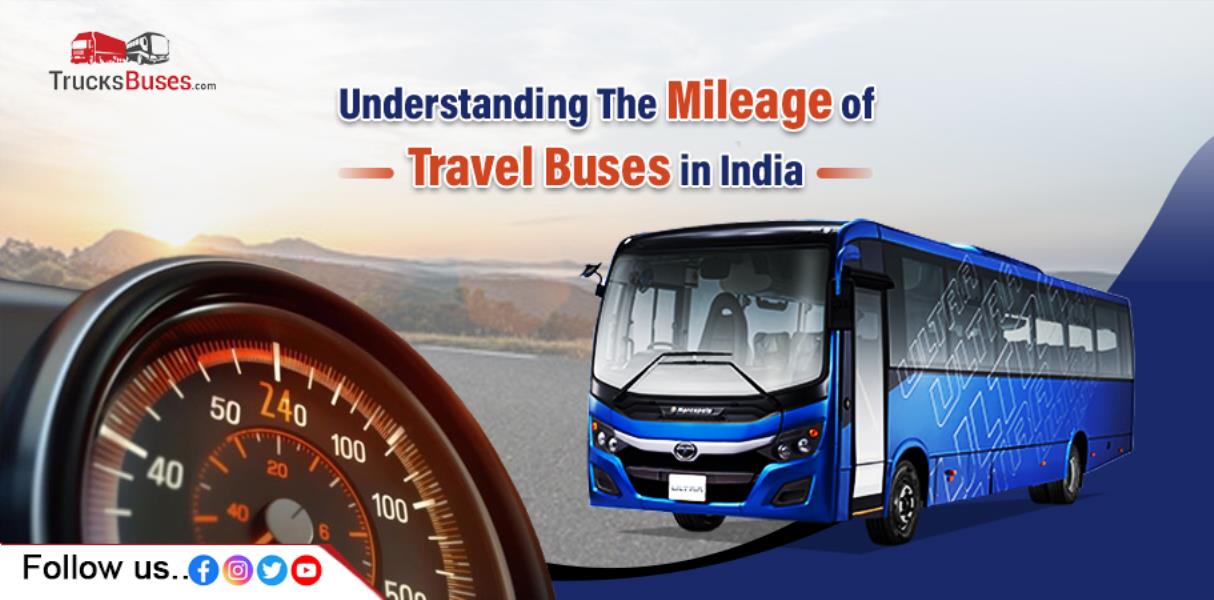Understanding the Mileage of Travel Buses in India
When it comes to choosing a travel bus, one of the key factors to consider is its mileage. Mileage refers to how efficiently a bus uses fuel, which impacts both operational costs and environmental concerns. Different types of buses city buses, coach buses, and charter buses vary significantly in their fuel efficiency. Here, we will explore the mileage of various travel buses, focusing on specific models and brands to give you a clearer picture of what to expect.

What is the Mileage Range?
Mileage refers to the distance a vehicle can travel on a specific amount of fuel. It's typically expressed in miles per gallon (mpg) or kilometres per litre (kmpl). In other words, it tells you how efficiently a vehicle uses fuel. For example, if a bus has a mileage of 6 miles per gallon, it can travel 6 miles on just one gallon of fuel. Good mileage indicates better fuel efficiency, which can help reduce travel costs and environmental impact.
City Buses
City buses are designed for short trips within urban areas, making frequent stops. Because of their stop-and-go nature, city buses generally have lower mileage compared to buses used for long-distance travel. On average, city buses achieve between 3.5 to 6.5 miles per gallon (mpg). This range reflects the typical performance of city buses in various conditions, including passenger load and driving patterns.
Coach Buses
Coach buses are built for long-distance travel, providing a more comfortable ride over extended journeys. They are designed to be more fuel-efficient on highways compared to city buses. The average mileage for coach buses falls between 6 to 8 miles per gallon (mpg). This efficiency is due to their streamlined design and more consistent driving conditions, such as highway travel without frequent stops.
Charter Buses
Charter buses, which are often used for group travel over long distances, have mileage figures that can vary based on the model and whether the bus is equipped with air conditioning
Mileage Details for Popular Bus Models: Ashok Leyland, Volvo, Scania, and Tata
Without AC: These buses typically achieve around 5 to 6 kilometers per liter (kmpl) when driven at moderate speeds of about 50-60 km/h.
With AC: When air-conditioned, the mileage drops slightly, ranging from 4.5 to 5.5 kmpl due to the added load on the engine.
Volvo 9600: This 15-meter multi-axle bus has a mileage between 2 to 3 kilometers per liter (kmpl). The exact mileage can vary based on factors such as driving habits, road conditions, and passenger load. For instance, driving at high speeds of 80-120 km/h tends to reduce fuel efficiency.
Scania Buses:
Scania buses are speed-locked at 100 km/h and generally provide 3.7 to 4.0 kmpl when driven at a speed of 80 km/h. This efficiency is due to their design which balances speed and fuel economy.
This model delivers a mileage range of 5 to 6 kmpl. Actual mileage can vary based on driving habits, passenger load, road conditions, and gradients. This range provides a general idea but may differ in real-world scenarios.
For the 38/42 seater versions of this bus, the mileage ranges between 5 to 6 kmpl, similar to the Tata Ultra Prime. This mileage is also influenced by driving conditions and other operational factors.
Factors Influencing Bus Mileage
Several factors can affect the mileage of a bus, including:
- Driving Habits: Aggressive driving, such as rapid acceleration and hard braking, can reduce fuel efficiency. Smooth and steady driving helps in achieving better mileage.
- Passenger Load: A higher number of passengers increases the weight of the bus, which can lower fuel efficiency.
- Road Conditions: Hilly or rough roads require more power from the engine, which can decrease mileage. Conversely, smooth and level highways are more fuel-efficient.
- Speed: Driving at higher speeds generally reduces fuel efficiency. Maintaining a steady, moderate speed is better for mileage.
- Bus Maintenance: Regular maintenance, including engine tune-ups and proper tire inflation, can help maintain optimal fuel efficiency.
Tips for Bus Operators to Improve Fuel Efficiency
To improve fuel efficiency, bus operators can follow these tips. First, drive smoothly by avoiding rapid acceleration and hard braking. This helps conserve fuel. Second, keep the bus well-maintained with regular engine tune-ups and proper tire inflation. This ensures the bus runs efficiently. Third, reduce the weight by removing unnecessary items and keeping passenger loads manageable. Fourth, use air conditioning sparingly, as it can increase fuel consumption. Fifth, plan routes to avoid heavy traffic and long idling times. Finally, train drivers on fuel-efficient driving techniques. By following these practices, operators can enhance mileage and reduce overall travel costs.
Conclusion
Understanding the mileage of different travel buses is crucial for making informed decisions, whether you are purchasing a new bus or managing an existing fleet. City buses generally have lower mileage due to their frequent stops, while coach and charter buses are more fuel-efficient over longer distances. Specific models from brands like Ashok Leyland, Volvo, Scania, and Tata offer varying mileage figures based on their design and operational features. By considering factors such as driving habits, road conditions, and bus maintenance, you can optimize the fuel efficiency of your bus and reduce overall travel costs.
Whether you are a fleet manager or simply curious about bus mileage, knowing these details can help you make better choices and understand the impact of fuel efficiency on your travel needs.
Read Also:
Popular Volvo Buses in India
Top 5 Tata Vans and Buses for Urban and Rural Transport